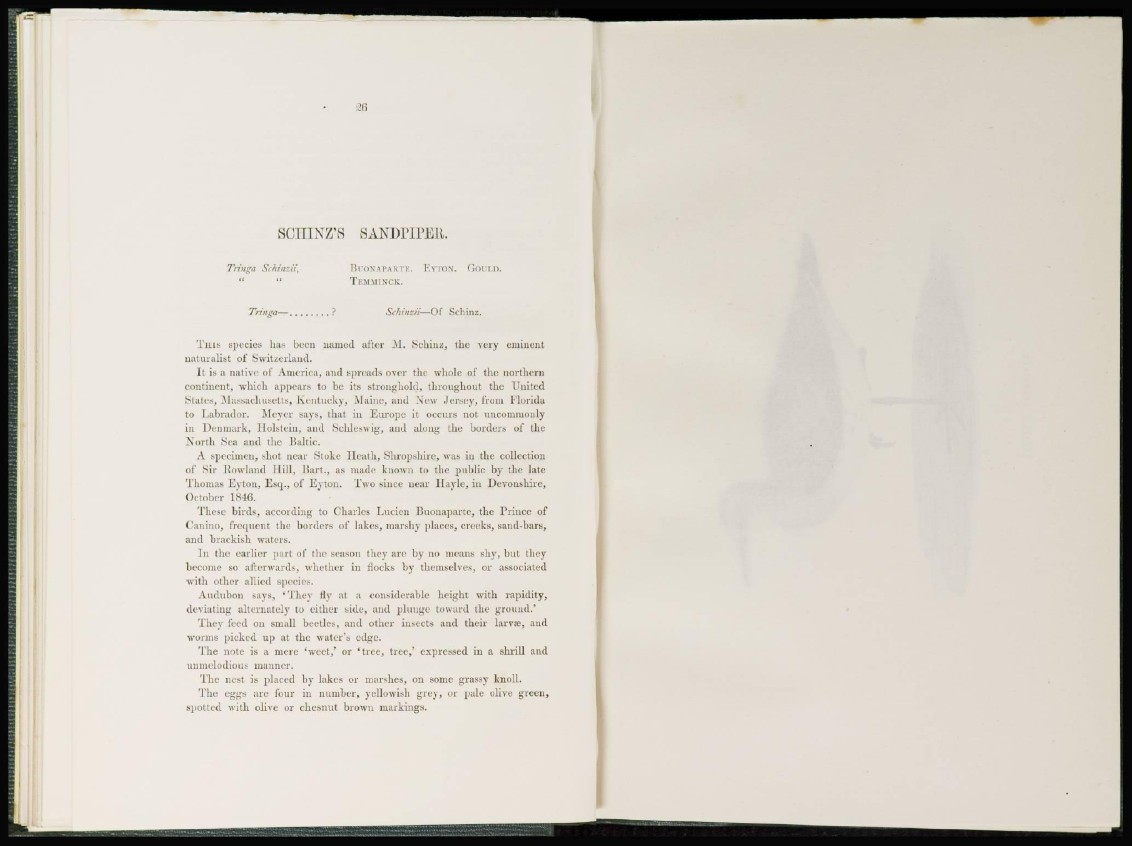
!6
SCHINZ'S SANDPIPEa.
Tringa Schinzii, BUONAPARTE. EYTON. GOULD.
" " TEMMINCK.
Tringa— ? Schinzii—Of Schinz.
T H I S species has been named after M. Schinz, the very eminent
naturalist of Switzerland.
I t is a native of America, and spreads over the whole of the northern
continent, which appears to be its stronghold, throughout the I nited
States, .Massachusetts, K e n t u c k y , Maine, and N e w Jersey, from Florida
to Labrador. Meyer says, that in Europe it occurs not uncommonly
in Denmark, Iiolstein, and Schleswig, and along the borders of the
N o r t h Sea a n d t h e Baltic.
A specimen, shot near Stoke Heath, Shropshire, was in the collection
of Sir Rowland Hill, Bart., as made known to the public by the late
Thomas Eyton, E s q . , of Eyton. Two since near Hayle, in Devonshire,
October 1846.
These birds, according to Charles Lucien Buonaparte, t h e P r i n c e of
Canino, frequent the borders of lakes, marshy places, creeks, sand-bars,
and brackish waters.
I n the earlier part of the season they arc b y no means shy, but they
become so afterwards, whether in nocks by themselves, or associated
w i t h other allied species.
Audubon says, ' T h e y fly at a considerable height with rapidity,
deviating alternately to either side, and plunge toward the ground.'
They feed on small beetles, and other insects and their larvae, and
worms picked up at the water's edge.
The note is a mere 'weet,' or ' t r e e , t r e e , ' expressed in a shrill and
unmelodious manner.
The nest is placed by lakes or marshes, on some grassy knoll.
The eggs are four in number, yellowish grey, or pale olive green,
spotted with olive or chesnut brown markings.